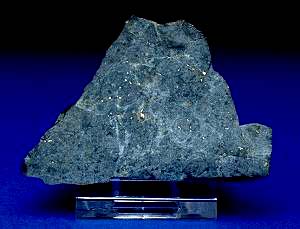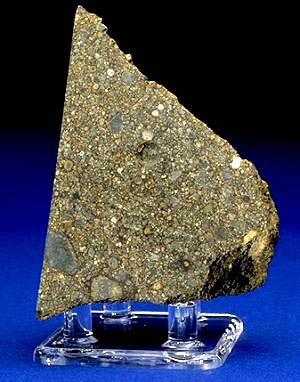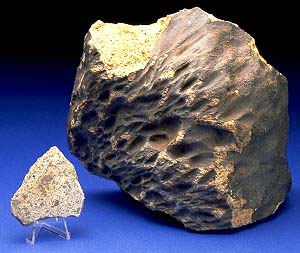CHONDRITES
The group of stone meteorites known as chondrites is broken down into three classifications: ordinary chondrites, including amphoterites (LLs), enstatite chondrites (E chondrites), and carbonaceous chondrites, (C chondrites).
"Ordinary" chondrites are classified from LL for "low" iron content, through H for "high" iron content. They are further classified by a numbering system of 3 through 6: where the lower the number the less the chondrules have changed and the higher the number, the more the condrules have been changed. This alteration may have been caused by heat, pressure or shock prior to landing on Earth. An L3 for instance would refer to a low iron, virtually untouched ordinary condrite with perfect chondrules.
Carbonaceous chondrites are those that are rich in the element carbon. These meteorites have stirred a great deal of scientific interest since the discovery that they contain amino acids, the building blocks of proteins, as well as diamonds and other complex and interesting compounds.





